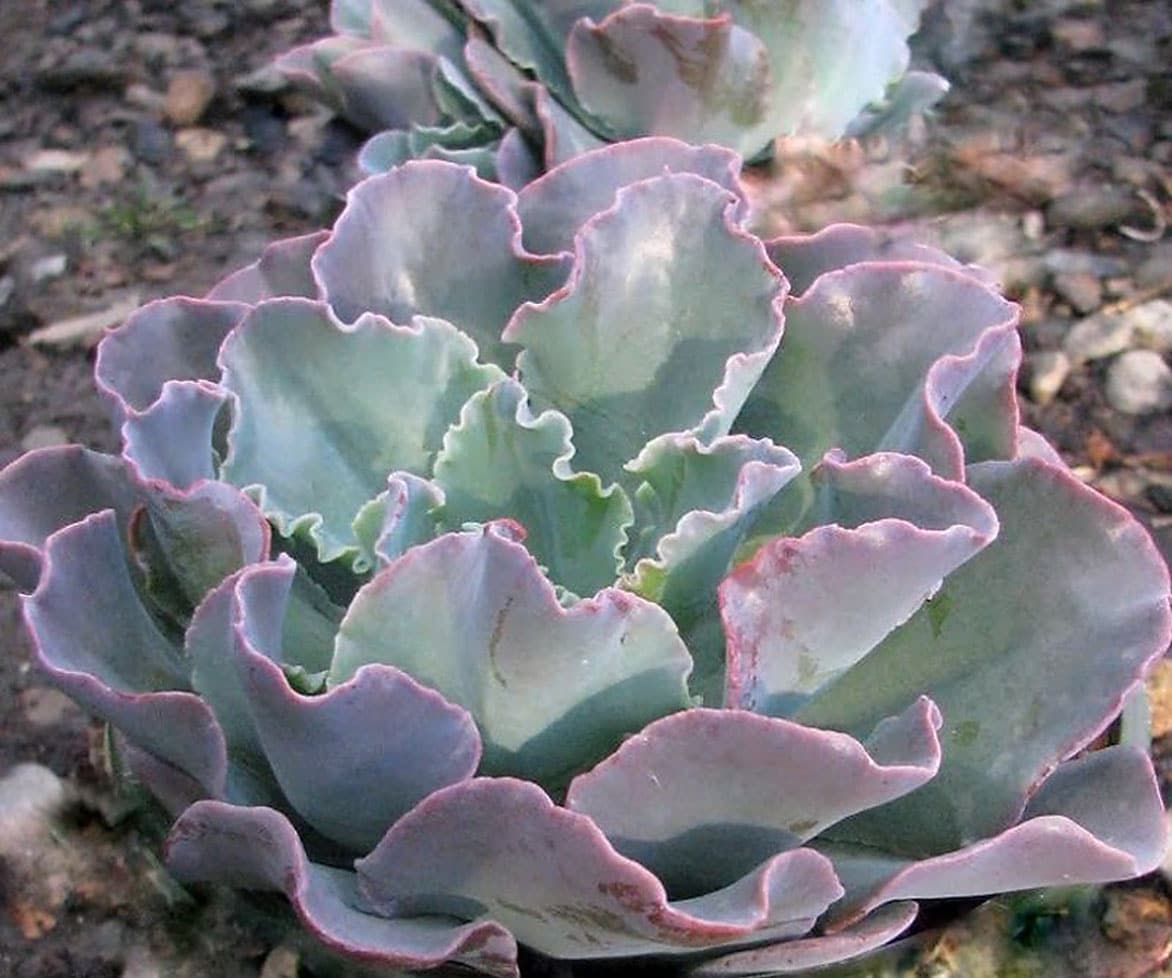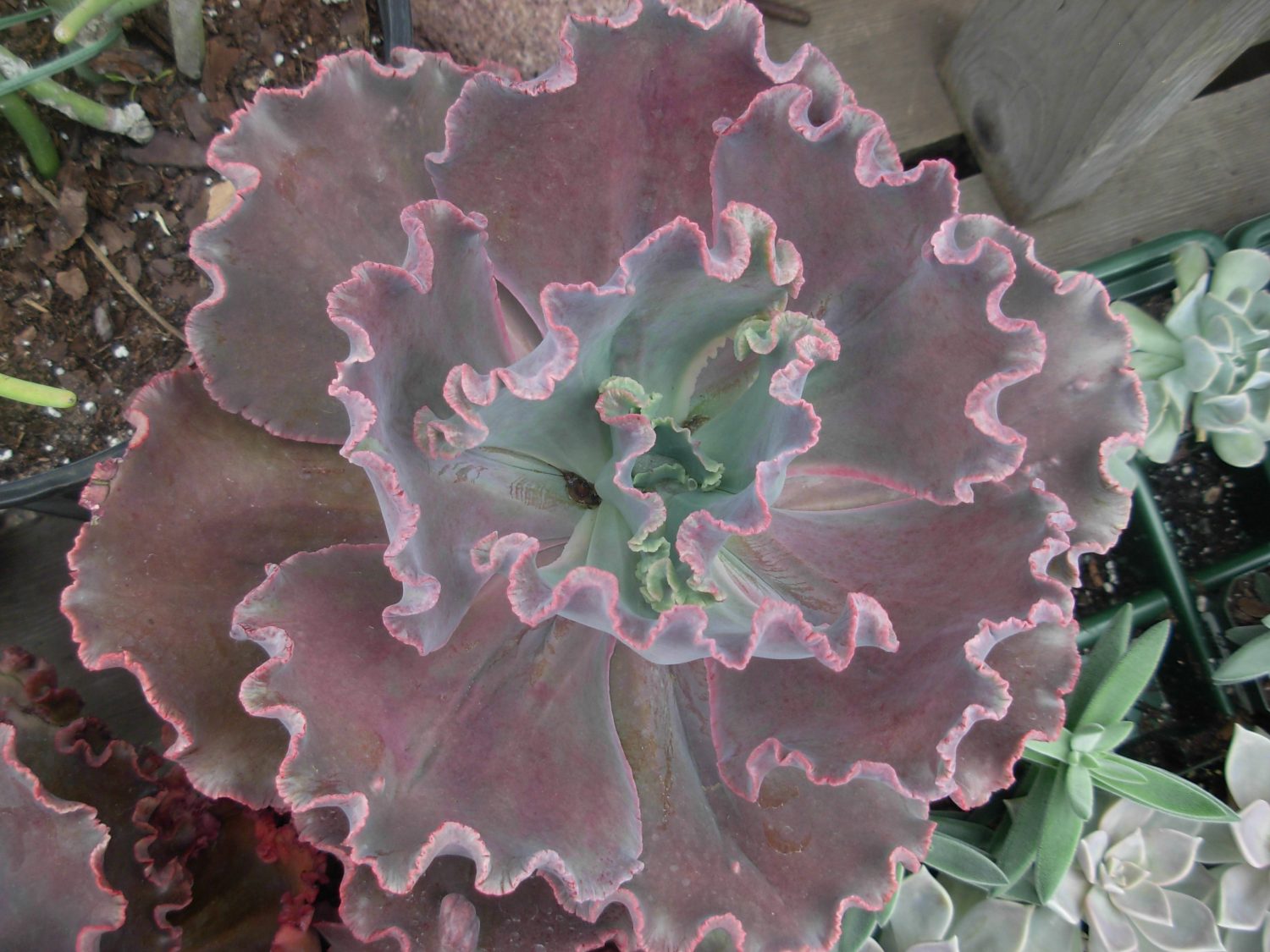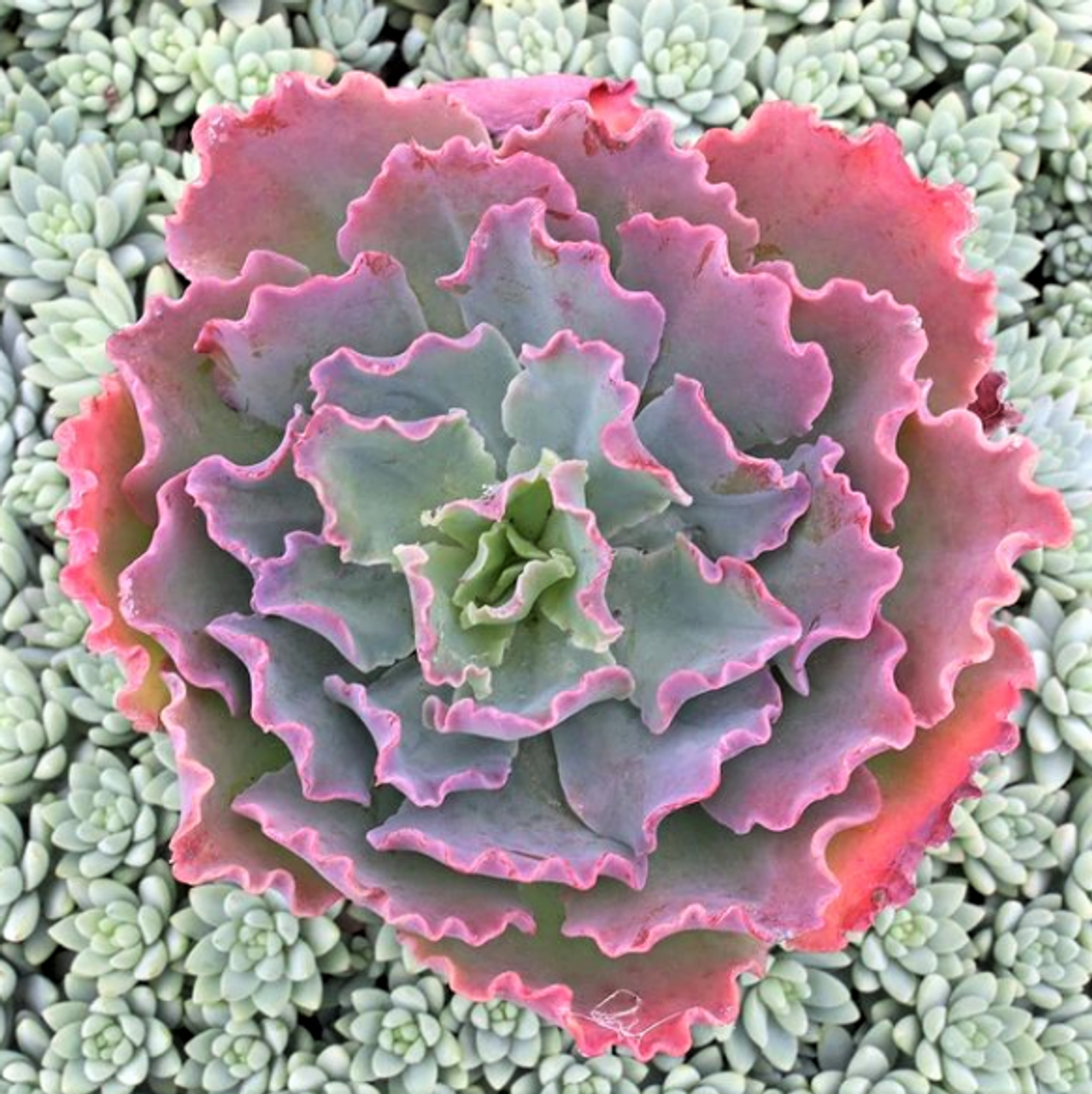This big blue-green succulent will develop a red hue if exposed to direct sunlight. When summertime comes around, expect to see bright red-orange flowers blooming.
Table of Contents
Care and Propagation Information
Echeveria ‘Ruffles’ can be a great choice for rock gardens and succulent displays; plus, it has the added benefit of being both deer and drought resistant.
Watering
Echeveria ‘Ruffles’ should be watered using the “soak and dry” method, which requires allowing the soil to become completely dry before watering it again. This is the same as other succulent plants, and will help the plant thrive.
Where to Plant
If you live in an area with temperatures that dip below 30° F (-1.1° C), it is advisable to grow Echeveria ‘Ruffles’ in a pot that can be brought inside and placed under a grow light. The plant will thrive in either full or partial sunlight.
Put a plant in a spot in the garden that receives 6 hours of sunlight each day.
How to Propagate Echeveria ‘Ruffles’
Echeveria ‘Ruffles’ can be grown from cuttings or leaves taken from existing plants.
Cuttings
To cultivate ‘Ruffles’ from cuttings, use a clean, sharp blade or scissors. Take a stem from the mother plant and let it heal for a few days before planting in soil that has excellent drainage. Make sure to water only when the ground has dried out completely.
Leaves
To propagate ‘Ruffles’, twist off a leaf from the mother plant so that none of the leaf is still attached to the stem. This will give you the best chance for success.
Let the leaf dry out for a few days until it forms a callous. Then, place it on soil that is good at draining water. Water it when the soil is completely dry.
Care and Propagation Information
General Care for Echeveria ‘Ruffles’
Watering
Echeveria ‘Ruffles’ should be watered using the “soak and dry” method, which requires allowing the soil to become completely dry before watering it again. This is the same as other succulent plants, and will help the plant thrive.
Where to Plant
If you live in an area with temperatures that dip below 30° F (-1.1° C), it is advisable to grow Echeveria ‘Ruffles’ in a pot that can be brought inside and placed under a grow light. The plant will thrive in either full or partial sunlight.
Put a plant in a spot in the garden that receives 6 hours of sunlight each day.
How to Propagate Echeveria ‘Ruffles’
Echeveria ‘Ruffles’ can be grown from cuttings or leaves taken from existing plants.
Cuttings
To cultivate ‘Ruffles’ from cuttings, use a clean, sharp blade or scissors. Take a stem from the mother plant and let it heal for a few days before planting in soil that has excellent drainage. Make sure to water only when the ground has dried out completely.
Leaves
To propagate ‘Ruffles’, twist off a leaf from the mother plant so that none of the leaf is still attached to the stem. This will give you the best chance for success.
Let the leaf dry out for a few days until it forms a callous. Then, place it on soil that is good at draining water. Water it when the soil is completely dry.
FAQ
How do you know if Echeveria needs water?
The wrinkled, shriveled appearance of the leaves of your Succulent is an indication that it needs more water. The cells in the plant have released their stored moisture, and they are attempting to take in more water to replenish what has been lost.
How do you propagate Echeveria ruffles?
To propagate ‘Ruffles’ from leaves, carefully twist a leaf from the mother plant and make sure that no part of the leaf stays attached to the stem. Let the leaf dry out for several days until the end callouses, and then place it on top of soil that allows for good drainage.
How long can Echeveria go without water?
Therefore, it is possible to go for up to 1-3 months without watering indoor succulents.
Does Echeveria need direct sunlight?
It is essential that your echeveria be situated in an area where it will get at least six hours of direct sunlight every day. If your echeveria does not receive an extended period of direct light, it will start to become tall and lose its attractive, compact shape.
How often should I water an Echeveria?
Every two months.



